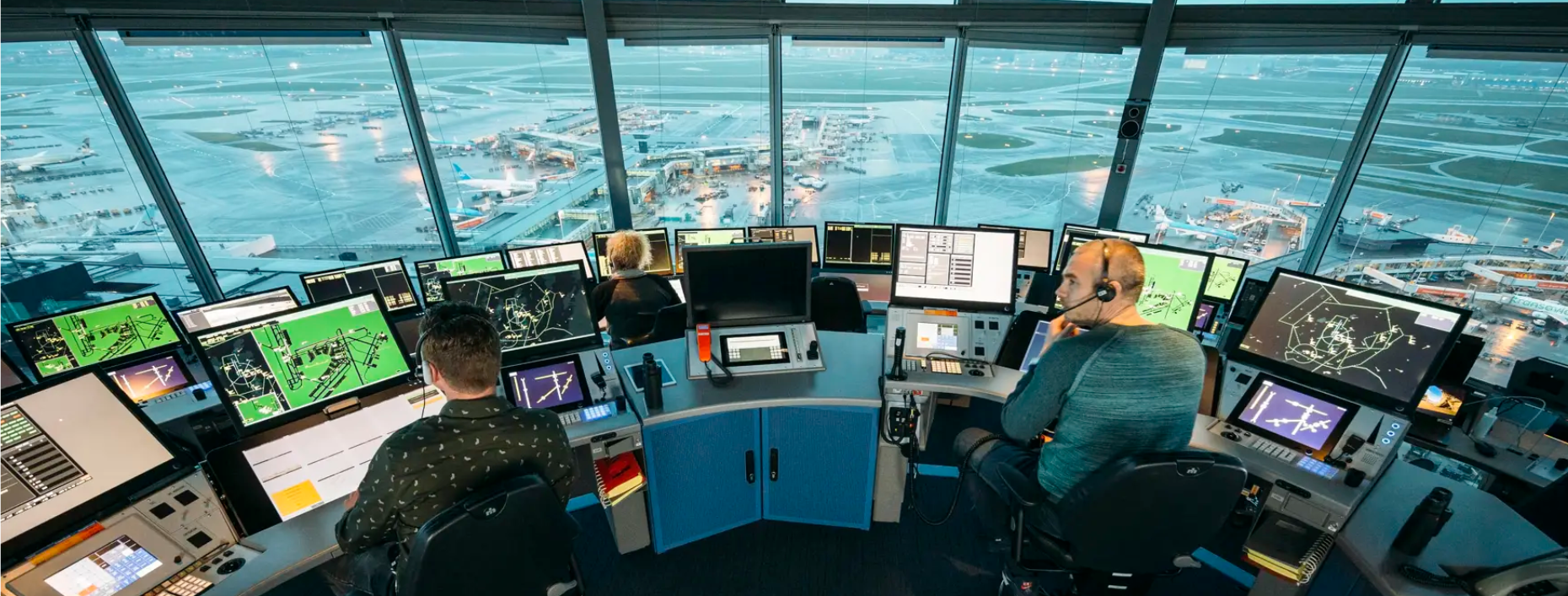Air Traffic Control the Netherlands (LVNL), which manages the safety of traffic flow in Dutch civil air spaces, has teamed up with Xomnia, Ferway, Okapion and TriopSys to develop the LVNL Decision Support Tool (DST) to reduce traffic delays in Dutch airspace.
In addition to more accurate data and several simulation modules, DST incorporates two machine learning models that support air traffic by visualizing traffic data and simulating different planning scenarios.
DST helps LVNL reduce delays and holdings of flights in the Dutch airspace. This will lead to less nuisance for passengers and a reduction in total emissions and costs in the Dutch airspace, which is one of the busiest and most complex in the world.
"Xomnia proved to be an excellent partner in developing a Machine Learning model which could be used from the start. Xomnia’s employees quickly learned the field of Air Traffic Management and implemented this knowledge to build hands-on tools and models that could be applied directly in our software" – André van de Groep, Project Manager/Product Owner of the Decision Support System
Challenge
LVNL is the agency in charge of air traffic control in the airspace of the Netherlands. Everyday, it helps route a huge flow of aircrafts safely and effectively to and from Schiphol and the regional airports. To better fulfill this goal, the agency wanted to simulate future scenarios with the most accurate insight into future traffic load, runway capacity and workload.
Traffic delays are influenced by two main factors: the traffic load and the landing capacity. The traffic load refers to the number of aircrafts that are present in an airspace or are scheduled to arrive or depart from an airport within a certain timeframe. The landing capacity is the number of flights that can land on the runway within a time period, and is determined by the number of available runways and weather conditions.
Traditionally, LVNL’s team of air traffic controllers and their supervisors used the expected time from flight data messages to balance the traffic load and landing capacity and to regulate traffic. However, comparing these with the actual arrival times showed a discrepancy, which could lead to delays.
When traffic load is higher than the number of flights LVNL can handle, flights that are still on the ground may be delayed to balance the expected traffic load with the landing capacity. In 2019, more than one million delay minutes were required in Dutch airspace in order to balance discrepancies in air traffic volume and capacity.
To improve its way of working, the agency needed to be able to make the indication of expected traffic as accurate as possible.
Solution
Xomnia’s team helped develop two predictive models. The first model predicts entry times of flights into the Dutch airspace to calculate traffic load more accurately. The second model predicts and optimizes the future runway planning and then calculates the landing capacity that follows from this planning. Together, these models make up the Decision Support Tool.
● Model #1: Entry time prediction
In order to predict more accurate arrival times, we helped train two machine learning models based on historical flight plan data. These models are designed to predict the amount of time it will take a flight to reach the Dutch airspace, based on the information provided in a flight plan message. To account for differences in processes between ground and air operations, separate models were trained for each phase.
● Model #2: Runway planning and capacity prediction
We assisted in developing a machine learning algorithm that predicts which type of runway configurations can be used throughout the day. These configurations impact the number of airplanes that can utilize the runway.
In addition, we created a second algorithm to translate the volume of air traffic in the airspace to runway capacity. Based on the predicted runway configurations, this algorithm calculates the minimal separation between aircrafts on the runway based on business rules, weather conditions and the size of consecutive aircrafts. By doing so, it helps manage air traffic more efficiently and ensures safe takeoffs and landings.
Lastly, the two algorithms work together to calculate predicted delays, which is used to finetune the runway planning, ultimately leading to less delay.
Impact
Both models are integrated in the newly developed Decision Support Tool (DST), a system developed by an interdisciplinary team of domain experts, data scientists, software engineers and UX designers.
DST helps traffic controllers and their supervisors to efficiently manage the busy and complex airport operations. Xomnia's contributions helped make the data visualization and simulation more accurate. This will result in less delays and holdings of flights in the Dutch airspace, leading to less nuisance and emissions.
The enhanced traffic load has 37 percent less deviations in actual arrival time than the current estimation models. Big deviations, defined as more than 10 minutes between estimate and actual arrival, are reduced by 46 percent. Also, this enhanced traffic load trickles down into the estimated arrival times, thereby leading to better runway forecasting and capacity predictions.


